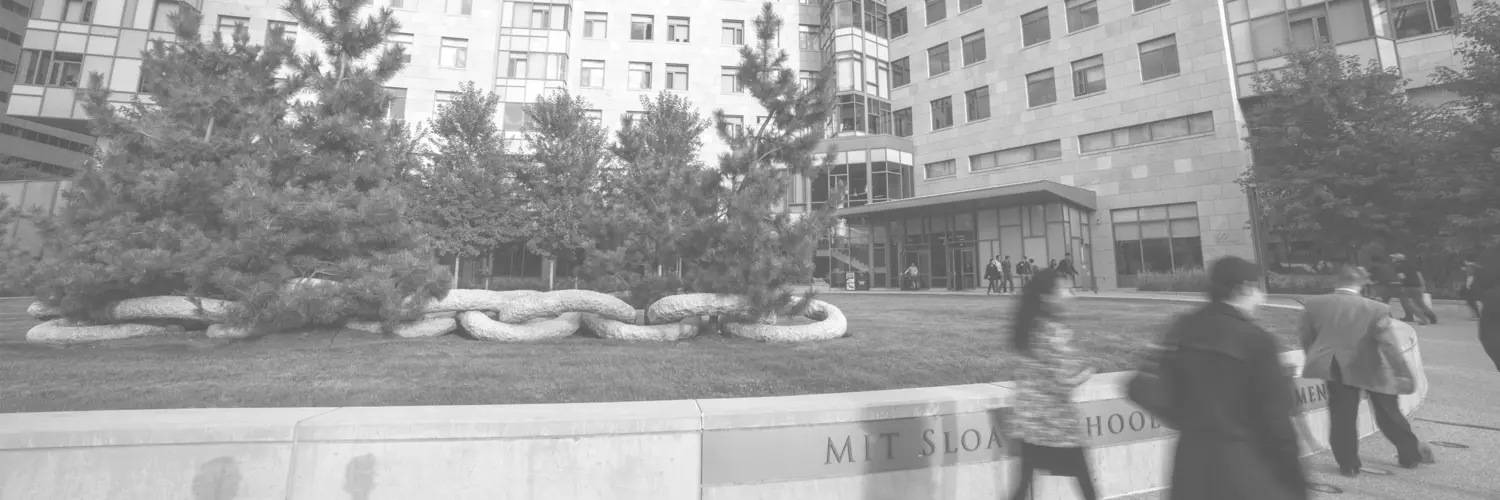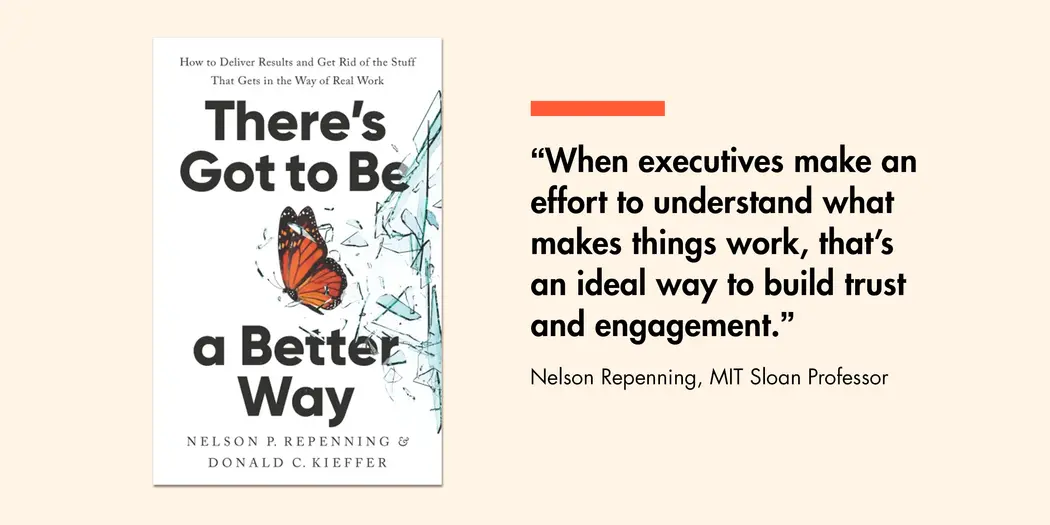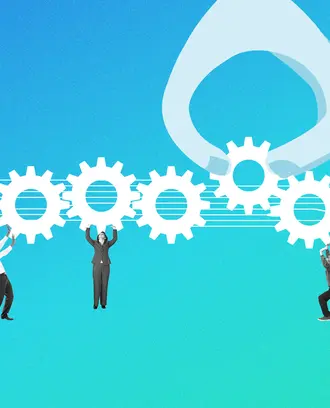Credit: Jennifer Tapias Derch
What you’ll learn:
- Why traditional management frameworks can lead to workarounds and organizational chaos.
- The five principles of dynamic work design that help leaders solve problems and improve workflow.
- How to implement incremental change by starting small and engaging directly with front-line work.
Donald Kieffer faced a crisis shortly after arriving at industrial time-switch maker Intermatic as senior vice president of operations: On-time shipments were below 60%. He pulled his executive staff together one morning and told them he wanted them to get directly involved with the details to find out why — right away.
By midafternoon, the team had surfaced problems everywhere: inventory locations, paperwork, packaging, customs, transportation. Instead of complaining about or ignoring them, they started to fix them. They also found and addressed issues with suppliers. Shipment metrics began to improve.
Four months later, on-time shipments were above 90%, a level the company had never seen before. Most of the organizational chaos had disappeared. Staff members began focusing on longer-term, more strategic issues. Eventually, front-line supervisors and managers told Kieffer that he no longer needed to attend their daily meetings; the situation was stable enough that his staff could run it.
Most importantly, everyone was clear on Kieffer’s expectations because he had demonstrated them himself: Stay close to day-to-day work, help employees solve problems that get in the way, and don’t sit back and blame someone else for dropping the ball. Go find the issue and help to resolve it. Don’t underestimate the impact of solving small, important problems every day.
“There’s Got to Be a Better Way”
Now a lecturer at the MIT Sloan School of Management, Kieffer shares his experiences at Intermatic and other firms in “There’s Got to Be a Better Way: How to Deliver Results and Get Rid of the Stuff That Gets in the Way of Real Work,” a new book he co-wrote with MIT Sloan professor Nelson Repenning. Together, they created and refined the principle of dynamic work design, a process of ongoing, hands-on problem-solving that emphasizes continuous improvement and “helps calm the chaos of everyday work,” as the book’s introduction puts it.
Kieffer and Repenning have been honing the concept of dynamic work design since their first meeting, in 1996. Kieffer was running the Harley-Davidson plant responsible for building the Twin Cam 88 engine, and Repenning had just accepted his first role at MIT Sloan. In the decades since, they have refined their philosophy for transforming organizations through their consulting work with firms in industries such as education, health care, banking, energy, and social services.
“When executives make an effort to understand what makes things work, that’s an ideal way to build trust and engagement,” said Repenning, faculty director of the MIT Leadership Center. “Those opportunities are like gold, if you’re trying to build a more productive culture.”
What is dynamic work design?
“There’s Got to Be a Better Way” describes dynamic work design as “akin to undertaking a progressive shift to a healthier lifestyle, one that is systematic and avoids the quick but unsustainable fix of a fad diet.” It’s not about off-site workshops with custom tote bags and inspirational speakers. It’s about acting like a scientist or engineer to identify and solve business problems — “engaging in ongoing experimentation to continually discover new and better ways for your organization to get its work done,” Kieffer and Repenning write.
Whether organizations realize it or not, they tend to embrace dynamic work design in response to a crisis. There’s a clearly defined priority, and leaders recognize the importance of putting titles and egos aside to get things done. When the Broad Institute transitioned from genomic sequencing to COVID-19 testing in the spring of 2020, executives worked the testing line, filling test tubes one minute and cutting out labels the next.
Repenning compared the scenario to a street the morning after a snowstorm, as neighbors happily share shovels and snowblowers so everyone can get moving again. “The mission is so overwhelming that people are likely to come together to solve the single thing they have to get done,” he said. “All other concerns dissipate.”
Why traditional work design fails in modern organizations
Once the crisis is over, though, organizations tend to return to their old ways of doing things. Projects stall. Problems pile up. The blame game resumes.
At its core, Repenning said, dynamic work design aims to address two core challenges within today’s enterprises. One is that many common management frameworks and workflows assume that the world is static. Take the annual budget: It’s developed by many managers in many meetings over many months, locked in before the fiscal year begins —and rendered obsolete at the first sign of market instability, supply chain disruption, or a new client.
When circumstances inevitably change, workers who are motivated to get the job done have little choice but to find their own way to do things differently. That is, they create workarounds.
“The workarounds are private, and there’s no way for others to benefit from it,” Repenning said. “They solve the problem in the short run but not in the long run.”
Those undocumented workarounds proliferate and contribute to chaos. Without a clear flow of products or information through a system, it’s all too easy for executives to expedite their pet projects at the expense of those already in the works. Teams bring all hands on deck — often into the evening and on weekends — to solve problems that could have been avoided if processes had been properly mapped out and workarounds hadn’t been necessary.
Repenning and Kieffer refer to this as firefighting mode. “It’s bad for the economy, it leads to unproductive organizations, and it makes you dread coming into the office,” Repenning said.

Visual Management for Competitive Advantage
In person at MIT Sloan
Register now
A better way: The five principles of dynamic work design
There are five underlying principles of dynamic work design. Repenning emphasized that they represent “ongoing, incremental effort” as opposed to immediate and wholesale change. The goal, he said, is to “create a system that reveals the next problem for everyone to solve, and make the work self-diagnostic.”
Solve the right problem — and solve the problem right. Executives tend to focus on big initiatives that promise big gains and solve big problems. It turns out that smaller initiatives “become the engine driving larger ongoing transformation,” according to “There’s Got to Be a Better Way.”
One example: For Panamanian box manufacturer Corporación Industrial, tweaks such as rearranging lunch schedules (so the corrugator machine could run continuously) and recalibrating the paper width (so it didn’t need to be cut) generated annual savings of $250,000 on a one-time investment of just $50,000.
Structure for discovery. Senior leaders often don’t fully understand their organization’s core work structures. They set business goals without realizing that employees are already facing enough of a day-to-day scramble to get work done. Leaders at the Palace Station Hotel and Casino learned that front-desk staffers were falling short of a guest email capture goal because they had many other things to tell guests about at check-in, like restaurant deals, hotel shuttles, and Las Vegas betting regulations.
Structured, shared discovery helps leaders set clear targets that benefit the company and the employee, define the activities that deliver the target, and assess whether things are working. The Palace’s leadership and front-desk staff developed a checklist of items to mention when guests arrived, which boosted email capture rates.
Meanwhile, Women’s Lunch Place in Boston embraced this principle to help triage the needs of its guests (women experiencing poverty and homelessness). Instead of sending every visitor to an experienced counselor, front-desk staffers started asking a few questions upfront to determine whether they could address a straightforward problem themselves, such as obtaining a subsidized subway pass. This helped the organization serve more women, document how it had improved, and obtain additional funding.
Connect the human chain. Complex human interactions drive bureaucratic processes. At one BP refinery, one-third of purchase orders were delayed for days because they required rework. The procurement software was no match for the dozens of steps necessary to request, order, and pay for parts, and it could take days to get details from refinery operators, who were rarely in front of a computer.
The answer in a case like BP’s isn’t to devote resources to redesigning already complex computer systems. Instead, it’s reestablishing human connections that facilitate the flow of information. One option is to establish an email handoff, which is most effective when everyone agrees on the information being transferred. At BP, by determining which details were most often missing from purchase orders and asking requesters to email those details along with each purchase request, the company was able to get the percentage of orders that needed reworking to below 10%.
Another option is a huddle, which is valuable when issues must be worked through before anyone can proceed. As in sports, a business huddle should be short, to the point, and clearly focused on what happens next. BP used huddles to address nonstandard purchase requests because short conversations worked better than ambiguous emails.
Here, Repenning offered an observation: “I’d bet many organizations use emails and meetings almost exactly backwards.” A meeting should be a two-way conversation, not 55 minutes of slides, and an email thread shouldn’t have more than a handful of replies.
Regulate for flow. Leaders may believe that their organization thrives under constant pressure, but the truth is that overloaded systems aren’t optimized for performance. Small disruptions grind operations to a halt, much like a stalled car on the highway at rush hour. Many organizations respond by expediting high-priority items — but this practice leaves a pile of partially completed projects in its wake.
Regulating for flow is like closing the airplane door before the plane takes off: Once work starts, it moves to completion. More work is added only when the system has downstream capacity. Yale University Hospital, for example, cut wait times for operating room discharges by 20% and reduced the cost per surgical case by 19% by linking the number of surgeries scheduled each day to the exact number of intensive care unit beds available for postoperative patients.
Visualize the work. In simple terms, people need to see the activities, dependencies, and bottlenecks that make up a complex process. Fannie Mae cut the time it took to close its books each month from 13 days to six days by documenting what data was needed, what handoffs needed to be made, and what tasks were required — a process that was supported by a daily huddle in front of a flowchart made with index cards, clothespins, and string.
Digital visualization tools are necessary these days, especially for global organizations. They help leaders illustrate where work needs to be done and allocate resources accordingly. Nonetheless, Repenning cautioned against an overreliance on digital visualization tools: “The magic is the quality of the conversation a physical board drives. That’s good for making decisions and solving problems.”
How to implement dynamic work design in your organization
Starting small is the key to dynamic work design success. It’s an approach that can be counterintuitive. “You’re a leader with big responsibilities and a big office. You think you need to do big things,” Repenning said. “But organizational change is retail and not a wholesale activity.”
Tips for implementing dynamic work design include:
- Leave that big office. Visit the loading dock, the factory floor, the finance department, and so on. Ensure that each stop is an opportunity to learn, not to be seen. “The ‘attaboys’ from the CEO don’t add a lot of value, and the ceremonial visits don’t teach a lot,” Repenning said. “If you carve out time to solve little problems, the example you set is powerful and spreads like wildfire through the organization.”
- Pick easy problems first. In large organizations, change is often rocky before results are realized. After all, there’s a learning curve for new workflows. Repenning stressed the importance of starting with problems that will likely have simple solutions and immediate results, because it can minimize the impact and disruption of change.
- Be a role model. Executives at manufacturing and energy firms don’t need to wear eye and ear protection in the corner office, but they need to make sure they follow required safety practices when they visit the shop floor or the refinery — even if the machines are off. “Thousands of people are looking to you to see what behaviors are rewarded,” Repenning said. “When you’re in a senior leadership position, you can lose sight of the symbolism of your actions.”
Next steps: Resources and courses
Read “There’s Got to Be a Better Way.” The book describes the most common obstacles to getting things done in modern organizations and outlines the five principles of dynamic work design in great detail. Repenning and Kieffer also offer practical tips for getting started with a small problem that supports an organization’s core work — and having difficult conversations about the work people do every day.
Watch “Dynamic Work Design: A New Way of Working,” a webinar conversation with Kieffer and Repenning hosted by MIT Sloan senior associate dean of executive education Peter Hirst.
Register for an MIT Sloan Executive Education course taught by Kieffer and Repenning:
- Visual Management for Competitive Advantage: MIT’s Approach to Efficient and Agile Work is a two-day, in-person course that emphasizes how making problems visible allows them to be addressed constructively. Repenning and Sheila Dodge, general manager of operations and development for the genomics platform at the Broad Institute — which is featured heavily in “There’s Got to Be a Better Way” — demonstrate how visual management helps teams find and fix workflow issues, make real-time improvements, and create competitive advantage.
- Business Process Design for Strategic Management is a six-week, self-paced online course next available beginning Feb. 11, 2026. Taught by Dodge, Kieffer, and Repenning, this course covers why improvement strategies often fail, how to implement successful continuous improvement, and how to gain a deep understanding of the principles of dynamic work design.
As students in these courses investigate the real challenges their organizations face, “they learn an enormous amount about how things actually work,” Repenning said. “That puts them in a good position to make changes.”
Donald Kieffer is a senior lecturer in operations management at the MIT Sloan School of Management. He is a career operations executive and co-creator of dynamic work design. Kieffer started running equipment in factories at age 17. He was vice president of operational excellence at Harley-Davidson, where he worked for 15 years. Since 2007, he has been advising executive teams around the globe in a range of areas, including strategy deployment, product development, and operational improvement. Kieffer has worked with industries as diverse as oil and gas, medical, biomedical, and banking.
Nelson Repenning is the faculty director of the MIT Leadership Center, and the School of Management Distinguished Professor of System Dynamics and Organization Studies at MIT Sloan. His early work focused on understanding organizations’ inability to leverage well-established tools and practices. He has worked extensively with organizations trying to develop new capabilities in both manufacturing and new product development. Building on his earlier work, Repenning now focuses on developing the theory and practice of dynamic work design and dynamic management systems, a method for ensuring that day-to-day work is tightly linked to the strategic objectives of a firm.





